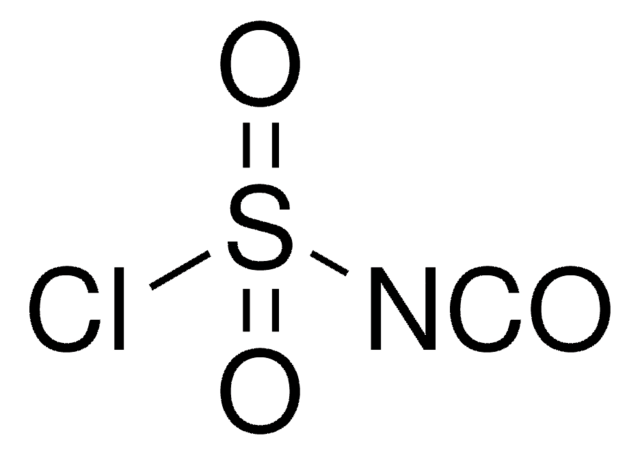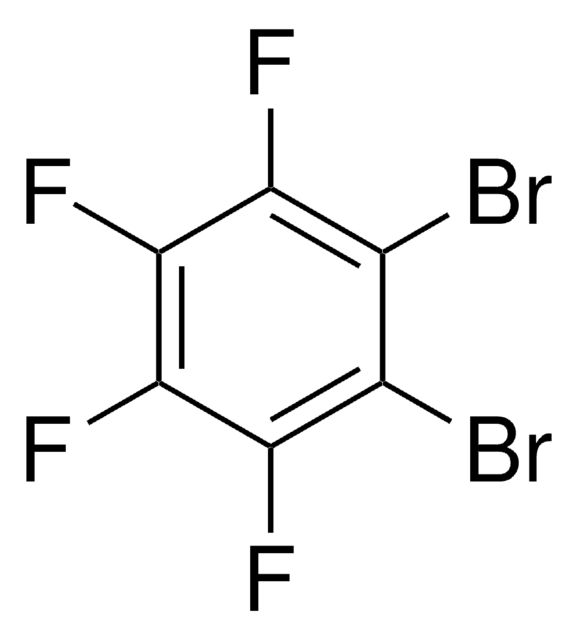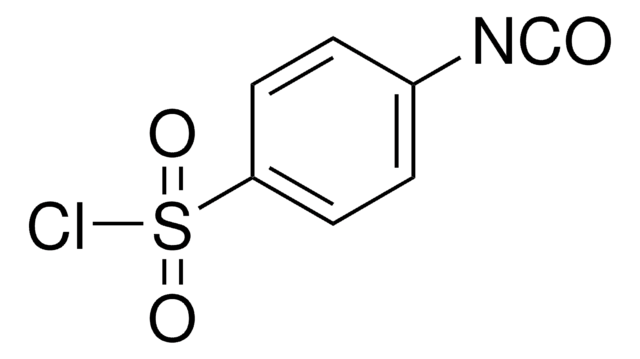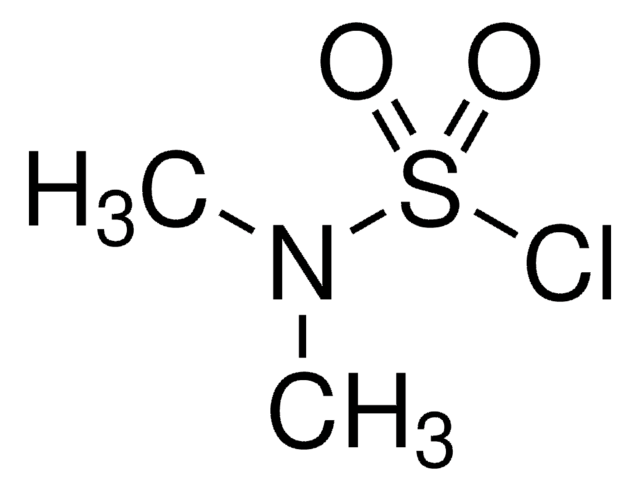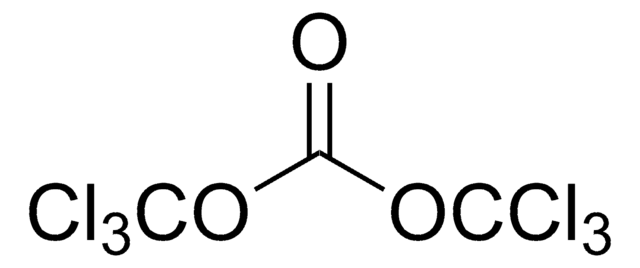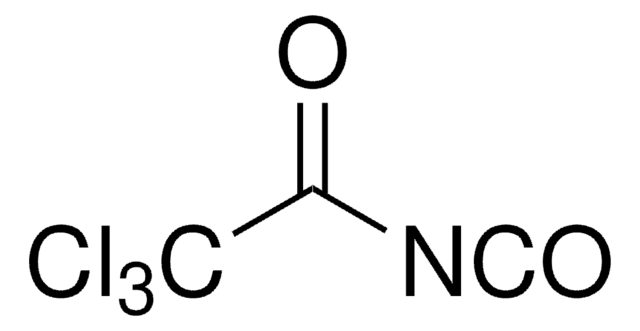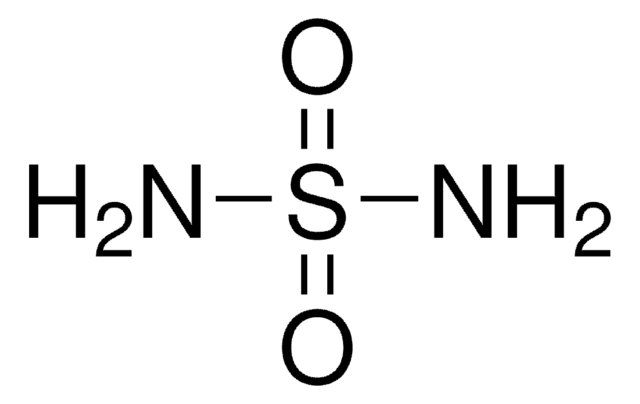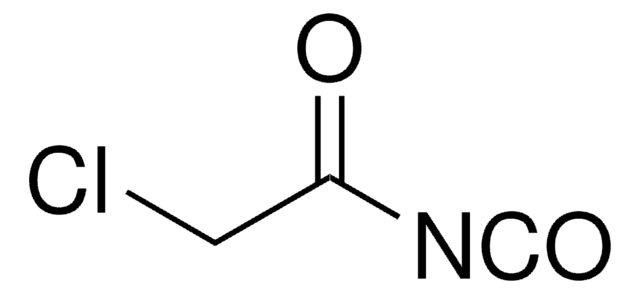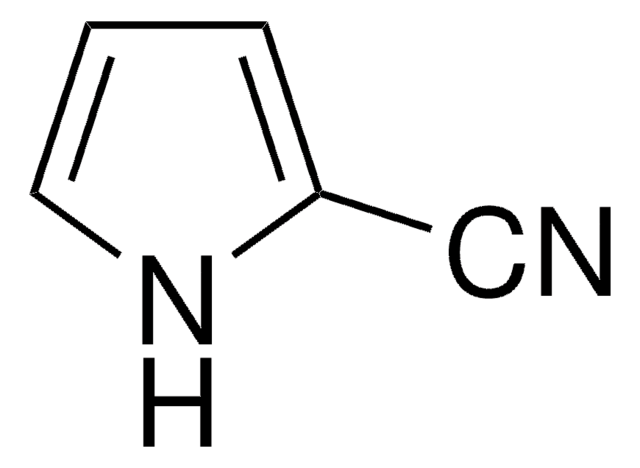142662
Chlorosulfonyl isocyanate
98%
Synonyme(s) :
CSI
About This Item
Produits recommandés
Pression de vapeur
5.57 psi ( 20 °C)
Niveau de qualité
Pureté
98%
Forme
liquid
Indice de réfraction
n20/D 1.447 (lit.)
Point d'ébullition
107 °C (lit.)
Pf
−44 °C (lit.)
Densité
1.626 g/mL at 25 °C (lit.)
Température de stockage
2-8°C
Chaîne SMILES
ClS(=O)(=O)N=C=O
InChI
1S/CClNO3S/c2-7(5,6)3-1-4
Clé InChI
WRJWRGBVPUUDLA-UHFFFAOYSA-N
Informations sur le gène
human ... ABCB1(5243) , FPR1(2357)
Vous recherchez des produits similaires ? Visite Guide de comparaison des produits
Description générale
Application
- Chlorosulfonyl isocyanate was used in synthesis and biochemical characterization of new class of membrane-associated glycosyltransferase inhibitors.
- It is synthetically versatile reagent and was used in the preparation of amides, lactams and triazocinones.
- It was employed in regio- and diastereoselective introduction of a protected amino group in synthesis of chiral, polyhydroxylated piperidines.
- It was used as reagent during the synthesis of novel sulfamides.
Mention d'avertissement
Danger
Mentions de danger
Classification des risques
Acute Tox. 4 Oral - Eye Dam. 1 - Resp. Sens. 1 - Skin Corr. 1B - Skin Sens. 1
Risques supp
Code de la classe de stockage
8A - Combustible corrosive hazardous materials
Classe de danger pour l'eau (WGK)
WGK 3
Point d'éclair (°F)
>230.0 °F
Point d'éclair (°C)
> 110 °C
Équipement de protection individuelle
Faceshields, Gloves, Goggles, type ABEK (EN14387) respirator filter
Faites votre choix parmi les versions les plus récentes :
Certificats d'analyse (COA)
Vous ne trouvez pas la bonne version ?
Si vous avez besoin d'une version particulière, vous pouvez rechercher un certificat spécifique par le numéro de lot.
Déjà en possession de ce produit ?
Retrouvez la documentation relative aux produits que vous avez récemment achetés dans la Bibliothèque de documents.
Les clients ont également consulté
Protocoles
To optimize hydrolysis using β-glucuronidase, factors such as incubation time, temperature, hydrolysis pH, enzyme source, and enzyme concentration must be evaluated for each glucuronide metabolite to be analyzed.
Notre équipe de scientifiques dispose d'une expérience dans tous les secteurs de la recherche, notamment en sciences de la vie, science des matériaux, synthèse chimique, chromatographie, analyse et dans de nombreux autres domaines..
Contacter notre Service technique